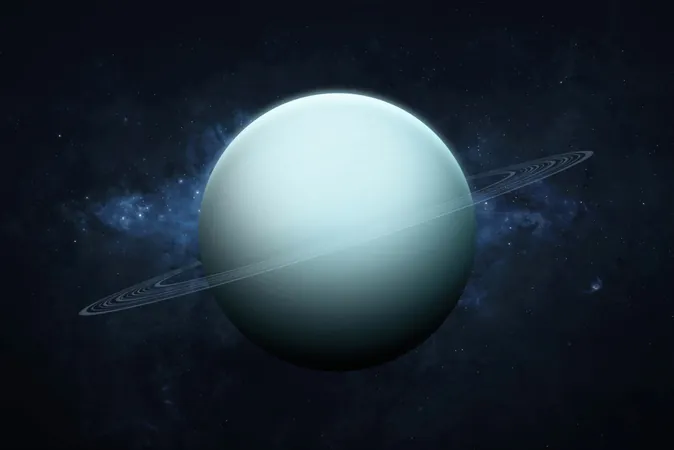
After Decades, Voyager 2's Findings on Uranus Reveal Stunning Secrets!
2024-11-19
Author: Yu
Voyager 2's Historic Encounter with Uranus
The Voyager 2 spacecraft's historic flyby in 1986 marked the first—and so far, only—detailed examination of Uranus, which is famous for its unique side-rotation and captivating atmosphere. This close encounter not only led to the discovery of several new moons and rings but also left scientists grappling with puzzling questions about the planet's characteristics.
Unveiling the Mysteries of Uranus
One of the major enigmas posed by Uranus has been its unexpected magnetic behavior. While theories about magnetosphere dynamics typically adhered to known patterns of particle interaction, Uranus, with its sideways rotation, has been challenging these conventional understandings.
Excitingly, scientists have recently re-evaluated the data collected during the Voyager 2 flyby and found that just before the spacecraft’s visit, unusual space weather had significantly compressed Uranus’s magnetosphere. This one-of-a-kind condition—occurring only about 4% of the time—meant that the spacecraft captured an unusual moment in the planet's magnetic conditions.
The Role of Solar Wind and Its Implications
Voyager 2 recorded findings that revealed a notable absence of plasma in Uranus's magnetosphere, yet it still exhibited intense electron radiation similar to that of Jupiter. The new analysis suggests that a powerful solar wind event may have honed this observation, pushing plasma away from the magnetosphere while also enhancing radiation intensity.
These revelations have led scientists to reconsider whether the five major moons of Uranus, long thought to be geologically dormant, could be active and continuously contributing ions to the magnetosphere. This contradicts previous notions and opens up thrilling new possibilities for our understanding of the outer solar system.
Looking Ahead: Future Exploration of Uranus
The recent findings have drawn attention from NASA and brought Uranus back into the spotlight for future exploration missions. The National Academies’ 2023 Planetary Science and Astrobiology Decadal Survey has emphasized the need for rigorous studies of Uranus to capitalize on these new insights.
Linda Spilker, a veteran of the Voyager 2 mission, noted how this new analysis offers a fresh perspective on earlier observations, asserting, “The magnetosphere Voyager 2 measured was only a snapshot in time.” This renewed focus on the enigmatic planet could lead to groundbreaking discoveries about our solar system.
The Enduring Legacy of Voyager 2
Voyager 2, which is currently billions of miles from Earth but still operational, continues to transmit valuable data back to our planet through NASA’s Deep Space Network. Scientists expect it to provide insights into the interstellar medium until at least 2025.
Despite the decades since its launch, Voyager 2 remains a cornerstone of scientific discovery, continuously unlocking the vast mysteries of our celestial neighborhood. As research progresses, the awe and intrigue surrounding Uranus promise to create a stunning chapter in our exploration of the universe.
Stay tuned for more groundbreaking discoveries as experts dive deeper into Uranus’s enigmatic realm!


 Brasil (PT)
Brasil (PT)
 Canada (EN)
Canada (EN)
 Chile (ES)
Chile (ES)
 España (ES)
España (ES)
 France (FR)
France (FR)
 Hong Kong (EN)
Hong Kong (EN)
 Italia (IT)
Italia (IT)
 日本 (JA)
日本 (JA)
 Magyarország (HU)
Magyarország (HU)
 Norge (NO)
Norge (NO)
 Polska (PL)
Polska (PL)
 Schweiz (DE)
Schweiz (DE)
 Singapore (EN)
Singapore (EN)
 Sverige (SV)
Sverige (SV)
 Suomi (FI)
Suomi (FI)
 Türkiye (TR)
Türkiye (TR)